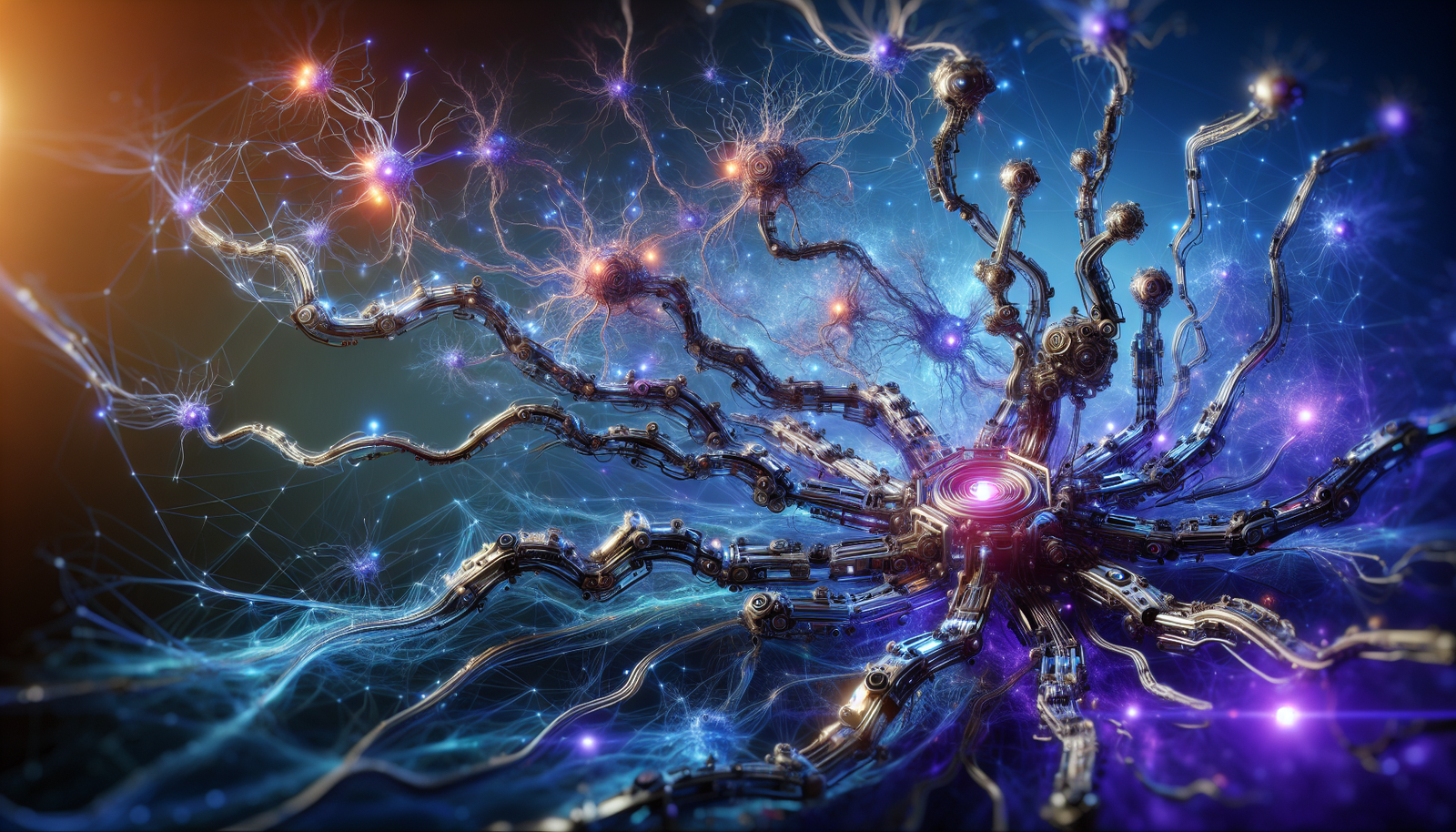An innovative framework is taking shape: a system inspired by the human nervous system, designed to orchestrate swarms of self-organizing robots. This model revolutionizes robot coordination, enabling them to interact with unprecedented fluidity. The potential lies in the ability to transform cooperation among these machines, fostering highly effective missions tailored to contemporary challenges. The advances of this research represent a significant step forward in the field of robotics, opening unexplored horizons for various applications.
A new architecture inspired by the nervous system
Researchers from the Free University of Brussels (ULB) have developed an innovative architecture for robot swarms. This framework, inspired by the human nervous system, promotes collaboration among robots within a team. The results of this study, published in Science Robotics, reveal advanced self-organization methods to enhance coordination in various tasks.
Benefits of robot swarms
The deployment of robotic teams could transform the execution of complex tasks in the real world. For example, these swarms can respond effectively during crisis situations, such as search and rescue after natural disasters. Their ability to operate together provides a rapid and coordinated response for missions such as monitoring pollution over large geographic areas.
Foundations of the self-organizing nervous system (SoNS)
The proposed framework allows robots to organize into dynamic sub-swarms. These groupings of robots improve their coordination while analyzing the environment. Dr. Mary Katherine Heinrich, a co-author of the study, emphasizes that this approach combines elements of centralized control and self-organization, leveraging the advantages of both systems.
Challenges of self-organization
The challenges related to self-organization in robotic swarms are increasing. While desirable behaviors emerge at the group level, each robot is programed individually. This complicates the analytical design of swarm behaviors, making this development demanding and lengthy. Prof. Marco Dorigo, the lead author of the study, notes that new behaviors often result from a laborious trial and error process.
How SoNS works
The mechanism of SoNS relies on the creation of self-organized hierarchies within a control network. This interactive model allows robots to temporarily reposition themselves within this hierarchy, acting as a collective brain during a mission. This structure promotes effective communication among robots, minimizing bottlenecks typically observed in fully centralized systems.
Each robot interacts only with its immediate neighbors while allowing information from sensors to be aggregated and separated according to the needs of the mission. According to Dr. Heinrich, SoNS can actively manage the balance between individual and collective behaviors, thus optimizing the performance of robots across various missions.
Promising tests and results
The researchers evaluated this framework during simulations with up to 250 aerial and terrestrial robots. These tests revealed an effective coordination of actions among these robots, validating the functionality of the SoNS architecture. Experiments using real robots also demonstrated encouraging results, paving the way for practical applications.
Future perspectives
The next steps include evaluating the framework in various scenarios and improving the architecture to facilitate its implementation on real robotic platforms. An exciting research direction involves developing more advanced SoNS brains. This need for sophistication could specifically include online learning capabilities and autonomous planning for complex missions.
More information: Weixu Zhu et al, Self-organizing nervous systems for robot swarms, Science Robotics (2024). DOI: 10.1126/scirobotics.adl5161.
Frequently asked questions
What is a self-organizing nervous system (SoNS) for robot swarms?
The self-organizing nervous system (SoNS) is an architecture that allows a swarm of robots to self-organize into a dynamic hierarchy, similar to communication structures in the human nervous system, while processing information in a decentralized manner.
How do robots coordinate within a swarm using SoNS?
Robots communicate only with their immediate neighbors, thus avoiding bottlenecks associated with centralized control systems, which allows them to effectively manage their collective actions, from perception to decision-making.
What are the practical applications of the SoNS framework in the real world?
The SoNS framework can be utilized in search and rescue missions, environmental monitoring, or emergency situations, enabling multiple robots to work together quickly and efficiently.
How does SoNS facilitate the transition from laboratory prototypes to real-world applications?
SoNS enables programming the entire swarm as if it were a single robot, making it easier to adapt these complex systems to the varied conditions of real environments.
What challenges does SoNS aim to overcome in swarm robotics?
SoNS seeks to overcome the limits of organization and coordination of robots, which have historically been hindered by the need for complex individual programming, making the development of new behaviors laborious.
How does SoNS improve the flexibility of robot behaviors?
The SoNS framework allows robots to quickly and dynamically modify and combine their behaviors in response to mission needs, thereby enhancing the adaptability and resilience of the swarm.
What is the impact of SoNS on communication between robots?
Communication within a SoNS enables efficient information fusion, where sensor data is aggregated and relayed while maintaining decentralized management, thereby improving collective decision-making.
What future research is planned concerning SoNS?
Future research will focus on evolving SoNS brains to incorporate advanced features such as online learning and autonomous mission planning, further enriching the capabilities of robot swarms.






